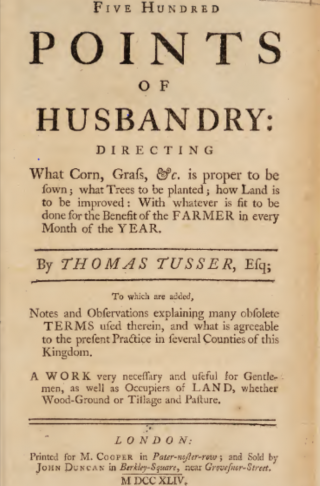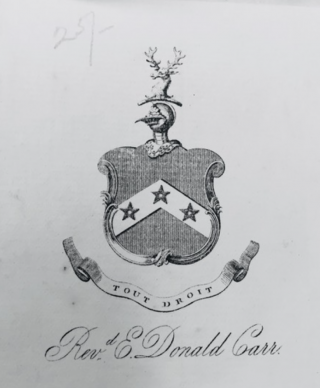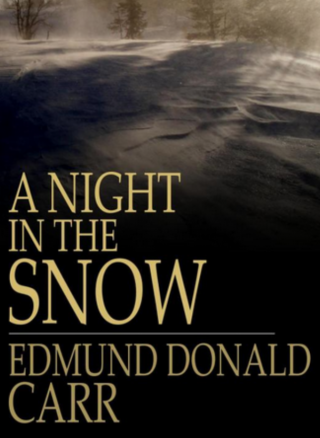Small Treasures from the Rare Book Room: Five Hundred Points of Husbandry
Jane Lloyd is a volunteer in the LuEsther T. Mertz Library of The New York Botanical Garden.
 Five Hundred Points of Husbandry … by Thomas Tusser is an almanac of common sense advice on farming and daily life in rural England which was first published in the 16th century. It is a well-known and popular book that is still in print today. The text is composed of rhyming couplets in simple, direct language. Tusser’s advice covers many aspects of agriculture and country life in Tudor England, making the book a treasure trove of information for scholars. The Mertz Library owns several editions of this work, the earliest of which is dated 1744.
Five Hundred Points of Husbandry … by Thomas Tusser is an almanac of common sense advice on farming and daily life in rural England which was first published in the 16th century. It is a well-known and popular book that is still in print today. The text is composed of rhyming couplets in simple, direct language. Tusser’s advice covers many aspects of agriculture and country life in Tudor England, making the book a treasure trove of information for scholars. The Mertz Library owns several editions of this work, the earliest of which is dated 1744.
Tusser, (c.1524–1580) was born in Essex in England and appears to have had a talent for music as a boy. He had been a chorister in several cathedrals by the time he was 20 years old. He attended Eton College and then served as a musician in the courts of several English noblemen. Tusser married in 1553, bought property, and began to farm in central England while still working as a musician. He appears to have been only moderately successful as a farmer.

Reverend Edmund Donald Carr’s coat of arms within Five Hundred Points of Husbandry
The Mertz Library’s 1744 edition of Five Hundred Points of Husbandry was owned in the 19th century by a Victorian cleric, Reverend Edmund Donald Carr (1829–1900) who has pasted a bookplate with his name and coat of arms to the inside of the front cover of the book. For thirty-five years, Carr was rector of Woolstaston in Shropshire, England. He agreed to serve as the rector of the church of a neighboring village several miles from Woolstaston across very wild and rough country. On Sundays the conscientious vicar led three services in these churches, in the mornings and evenings in Woolstaston and in the afternoon in the neighboring village.
The winter of 1865 was possibly the worst winter of the 19th century in England, with endless snow and frequent blizzards. Still, when a particularly ferocious storm struck the area on January 29, 1865, Reverend Carr decided that he would lead the Sunday afternoon service at the neighboring village in spite of the weather. Although his trip to the village had been very difficult, Reverend Carr decided he would return to Woolstaston to lead the Sunday evening service there. He set out into the howling blizzard and soon lost his way and walked for more than 22 hours through the night, losing most of his outer clothing along the way and becoming snow blind. In the morning he finally stumbled into a small hamlet whose residents gave him food and clothing and a horse and guide to take him home to Woolstaston. When he arrived home in Woolstaston, he was greeted as a miraculous survivor. The townspeople had thought he was dead when a search party from the town had found no trace of him in the night.

Reverend Carr was asked many times to write an account of his night in the snow and his account was published in 1865—an immediate hit. Like Thomas Tusser, his book has been reprinted many times since.
Linked by coincidence, these two popular books by two unusual authors deal with the relationship of human beings and nature. Tusser’s book is about human beings living and working with nature. Reverend Carr’s story is about what happens when human beings confront nature. Their stories reflect the choices we must make today in our relationship to the natural world.
SUBSCRIBE
Enter your email address to subscribe to this blog and receive updates on new posts.











